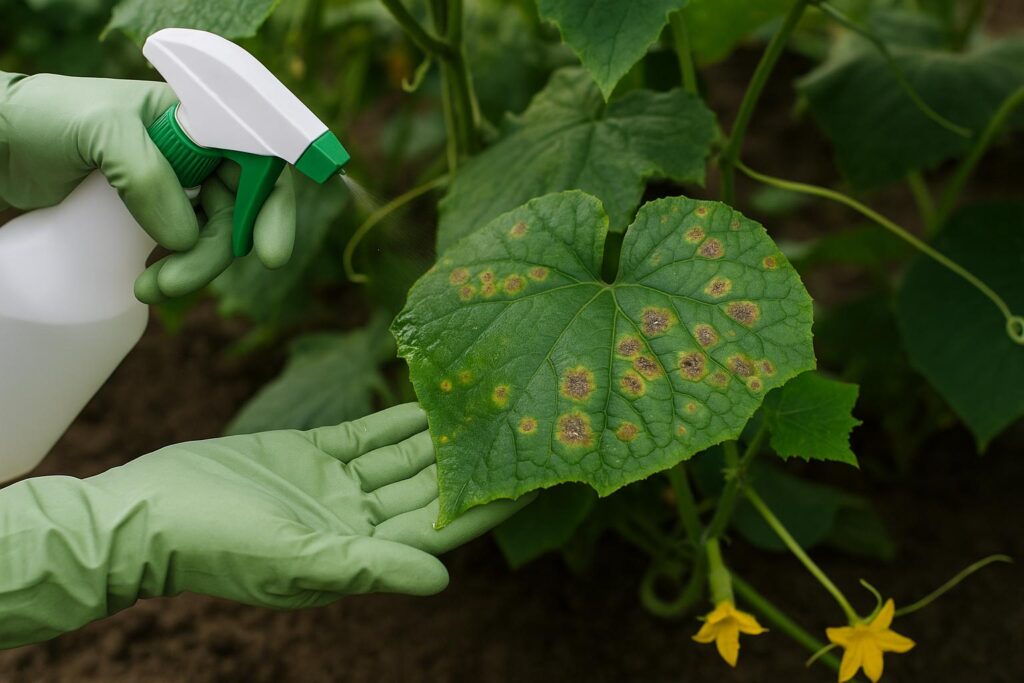
Crop protection has always been a race against time. Insects adapt fast, weather shifts rapidly, and market demands for cleaner produce continue to rise. Amid these changes, growers need tools that work with precision, consistency, and longevity. This is not just a comparison of two formulations. It’s a real-world narrative of how crop protection evolves—from tank-filling routines to strategic pest suppression. Understanding the difference between Midatek and traditional sprays is key to choosing the right solution for crops that can’t afford a second chance.
What Defines Midatek’s Identity in Pest Management?
Midatek contains 30.5% Imidacloprid in a suspension concentrate (SC) format. It is a neonicotinoid-class insecticide that targets nicotinic acetylcholine receptors in pest species. The active ingredient works systemically—entering plant tissues and traveling to feeding sites where pests suck plant sap.
What makes Midatek different is its ability to:
- Reach hidden parts of the plant, like undersides of leaves and newly emerging buds
- Provide residual control for 14 to 21 days, depending on crop and conditions
- Act on contact and through ingestion, making it lethal to most sucking pests
By comparison, conventional sprays like pyrethroids or organophosphates often act only on contact and degrade rapidly in the environment. In vegetables and fruit crops where foliage turnover is high, that short life span can mean gaps in protection.
Growers who manage high-value produce, such as tomatoes, brinjals, chillies, and grapes, often buy Midatek – Imidacloprid 30.5% SC to secure their crops during critical stages, including flowering, fruit set, and early pod development. This one-time action frequently replaces multiple rounds of traditional chemicals.
How Do Traditional Sprays Perform Under Field Pressure?
Conventional sprays typically include broad-spectrum insecticides that kill a wide range of pests on contact. However, they often require repeated application due to their short field life, especially in humid or rainy climates.
Traditional sprays:
- Lose effectiveness within 3 to 5 days under field conditions
- Do not move within the plant, missing hidden pest colonies
- Require more volume per hectare and frequent mixing
For example, a pyrethroid may knock down aphids temporarily, but without systemic action, the new colony developing on new shoots remains untouched. In contrast, Midatek translocates with the plant sap and intercepts pests at new growth points.
In fact, in a field study in Karnataka (2023), tomato crops treated with Midatek had a 28% lower whitefly population after 15 days compared to plots sprayed with lambda-cyhalothrin twice during the same period.
Where Does Midatek Outperform in Crop Cycles?
Midatek proves its value not just in short-term pest kill but in strategic protection across the crop cycle.
In fruiting vegetables like tomatoes and chillies, early-stage applications secure the crop canopy, reduce leaf distortion from jassids, and protect early fruits from thrips.
In cucurbits like bitter gourd and bottle gourd, one application at 25–30 DAS can suppress leafhoppers and whiteflies during their peak.
In plantation crops like citrus, Midatek provides longer-lasting control when used in drip irrigation or as a pre-flush spray against aphids and psyllids.
A single Midatek spray during the vegetative stage can reduce the need for 2 to 3 follow-up sprays, especially during low to moderate pest pressure seasons.
“In the field, timing beats quantity. A single well-placed systemic application is worth more than four contact sprays that miss the hidden layers.”
Does Systemic Action Reduce Spray Frequency?
Indeed. Midatek protects both emerging and existing leaves since it translocates throughout plant tissue. In crops that grow quickly, where new tissue becomes exposed every few days, this activity is very beneficial.
Data from Punjab Agricultural University (2022) showed that:
- Midatek-treated okra plots required 37% fewer insecticide applications
- Chilli fields showed 23% more uniform flowering and pod set
- Brinjal had 31% fewer pest-related blemishes on marketable fruit
Traditional sprays, due to their limited persistence, often require growers to spray every 7 to 10 days. This not only increases cost but can also raise residue concerns in perishable vegetables.
How Does Residual Activity Translate Into Real Efficiency?
Imidacloprid’s half-life in soil ranges from 48 to 190 days, depending on pH and organic matter. When used in foliar or soil application, Midatek offers residual action that protects against the next pest cycle.
This matters most during transitions:
- From vegetative to flowering
- From flowering to fruit initiation
- During post-transplant recovery
Midatek stays active inside the plant, in contrast to conventional sprays that disappear following a heat wave or rains. This results in reliable pest control during times of erratic weather, when many contact treatments are ineffective.
Because of its tenacity, midatek is perfect for crops cultivated in net houses or polyhouses, where humidity and irrigation are kept at high levels.
Are There Hidden Costs With Traditional Sprays?
Yes, traditional insecticides often bring extra operational costs due to:
- Increased frequency of application
- Higher water volume requirements
- Greater risk of pest resistance development
- Non-selectivity that harms beneficial insects
The secondary pest burden increases when beneficial organisms, such as parasitoid wasps or lady beetles, are eliminated. Particularly in open field vegetable systems, midatek provides selective toxicity that protects these natural adversaries.
According to a 2021 cost-benefit study by Tamil Nadu Agricultural University, switching from a pyrethroid-carbamate programme to Midatek in chilli increased yield by 18% while saving ₹1,200 per acre in chemical costs alone.
How Does Midatek Fit Into Integrated Pest Management?
Integrated Pest Management (IPM) requires tools that are both effective and compatible with biological control agents. Midatek, due to its systemic nature and selective action, fits well into this model.
It can be used alongside:
- Neem-based bio-pesticides
- Trichogramma egg parasitoids
- Sticky traps and pheromone lures
By applying Midatek during pest peaks and allowing natural enemies to regulate minor outbreaks, farmers can reduce total chemical dependency without risking crop damage.
According to IRAC global guidelines, systemic neonicotinoids like Imidacloprid should be rotated with other groups to delay resistance. Midatek fits into such rotation plans with minimal overlap.
FAQs
- How often should Midatek be applied?
Typically once every 14–21 days, depending on pest pressure and crop type. Scout before spraying. - Can Midatek be tank-mixed with micronutrients or fungicides?
Yes, it is compatible with most crop nutrition and disease control inputs. Always do a jar test before large-scale mixing. - Is it safe for pollinators?
Avoid application during flowering and apply during low bee activity hours to reduce impact. - What is the recommended dosage?
20–30 ml per 15 liters of water for vegetables. Follow label instructions for specific crops. - How long does Midatek stay active inside the plant?
It offers systemic protection for 2–3 weeks. Soil applications may extend this further. - Can it be used in organic farming?
No, Imidacloprid is synthetic and not approved for certified organic systems.
Where Can Growers Expect the Biggest Impact?
Midatek shines the most in:
- Short-duration crops like okra and green gram, where speed of action is crucial
- Export-oriented vegetables like capsicum and tomato, where low residue and clean fruit matter
- Drip-irrigated systems, where root uptake enhances duration of protection
It provides plant tranquilly in addition to insect control, freeing up resources for yield, flowering, and fruiting rather than stress reaction.
Farmers and agronomists who manage vegetable crops can benefit from the Plantwise Knowledge Bank’s region-specific advise and seasonal pest dynamics information.
What Comes After Efficiency?
With Midatek, the approach to pest control has clearly evolved. The appropriate chemical applied at the right time with the right impact is what makes a spray efficient, not the quantity of sprays. Growers require instruments that are in line with both plant physiology and ecological balance as insect behaviour becomes more erratic and markets demand cleaner produce.
Systemic protection will be the norm going ahead. However, farmers achieve true efficiency when they integrate ecosystem-friendly techniques, weather-aware scheduling, and data-driven scouting with solutions like Midatek.
What’s the next crop protection story? It goes beyond simply getting rid of bugs. The goal is to do so in a way that will benefit the crop, the land, and the environment in the upcoming growing season.





